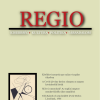The income effects of minority co-ethnic employment
The article by Zsombor Csata, Márton Péti, Betty Compton, Amy H. Liu and Zsolt Sándor titled The income effects of minority co-ethnic employment: the case of Hungarians in central and Eastern Europe was published in the Journal of Ethnic and Migration Studies.
Abstract
What is the effect of minority co-ethnic employment on income? While the business organizations literature argues diversity allows for knowledge accumulation, optimal labour allocation, and efficient interactions, absent is any consideration of language – e.g. language competency or language ideology. We argue when co-ethnic minorities work together, this shared language allows for bounded trust to develop; it also ensures there are preference similarities – factors that can increase firm productivity and individual wages. Using survey data of minority Hungarians in three Central and Eastern European countries (Romania, Slovakia, and Serbia), we find (1) diversity has no positive effect on income; and in fact, (2) co-ethnic employment increases wages in Southern Slovakia and Vojvodina. Additionally, we confirm that co-ethnic employment is not happening simply because of demographics. Instead, with one exception, the proportion of Hungarians in the workplace is significantly higher than in the areas where these jobs are located – suggesting a strategic behaviour by minority Hungarians. The implication is not that we endorse homogeneous workplaces per se, but that we remain cognizant of how asymmetric linguistic competencies and the underlying linguistic ideologies can shape power hierarchies – thereby limiting the benefits of diversity.









